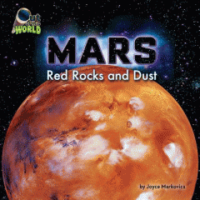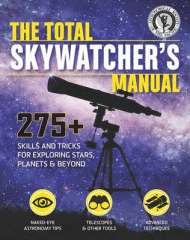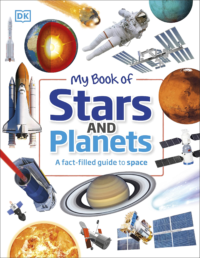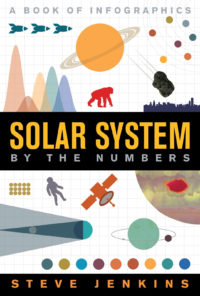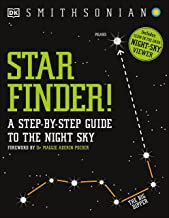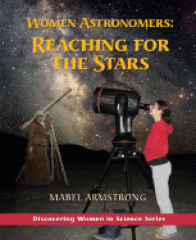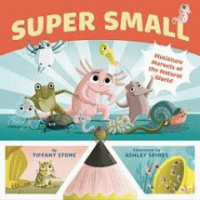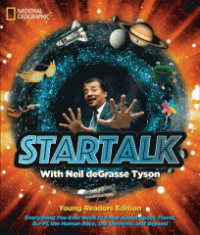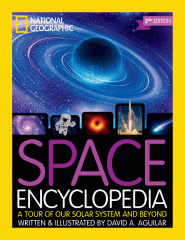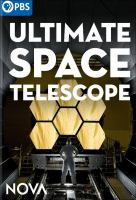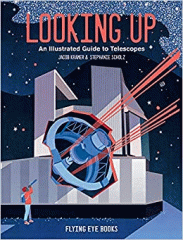
Hey there and hello, Earth-dwellers. Welcome to The Far Out Space Blog!
Previously on the CCPL Astronomy Club – The Season 2 finale of the CCPL club sure was fun. We discussed summer constellations, marked our calendars for the August 13th Perseid meteor shower, and learned more about the Milky Way, our home galaxy. The most fun, though, was extra discussion time with some great questions. Read on for summer plans, plus a letter to young astronomers.
Sky Happenings and How to See Them – Summer nights might be short, but they’re dazzling.
Speaking of Camping
If you’ve never seen the summer Milky Way from dark skies, you’re missing out! The Southern Maryland Astronomical Society has a nifty observatory in Nanjemoy that’s worth the drive. Check their website for open houses (and consider joining the club!) For skies a bit darker, a trip to Shenandoah National Park is a fantastic way to spend the weekend. They have cabins, a lodge, and plenty of camping. Plus, the Charlottesville Astronomical Society often hosts free stargazing programs on Friday evenings at the Big Meadows campground. (Sometimes I’m there, too. Drop me an email at JoshUrban@protonmail.com if you want to check.) Mountain weather is unpredictable, but the park is always worth a trip, even if it’s cloudy.
Summer Maps
Here’s a summer map for your celestial adventures. Looking for a different month? Check out Skymaps.com.
A Letter, Mainly to the Kids
Hey kids, a special “thank you” for being so awesome with Season 2 of CCPL Astronomy Club. Your questions were fun, razor-sharp, and most importantly, led to more questions. I love that about science. There’s almost never a “because” answer. If we ask why the sky is blue, we might learn about Rayleigh scattering, when a photon hits an oxygen or nitrogen molecule, causing it to re-emit blue light.
“Okay, but what’s a photon? And why does it do that?” (If you’re curious about that, check out the branch of science called quantum mechanics.)
(And if anyone ever tells you “because I said so”, don’t believe them.)
See, when we talk about the stars, black holes, planets, and light, and you’re curious and excited about the universe, I see all the things you could be. Maybe you’ll be an astronaut, an astrophysicist who studies black holes, a scientist who figures out time travel, a banker who makes a ton of money and buys lots of telescopes, or “just” someone who takes a walk when the sky is clear and the moonlight is beautiful.
(Hey, maybe you’ll be all of these things. Who knows!)
That’s a good thing for us grownups to see. It’s nice to have a reminder to be excited and curious about our beautiful universe. It’s important for us to remember that we all should reach for the stars, in whatever way that is, at whatever age we are.
By you being amazed, that means that everyone can get amazed. Thank you for that.
I hope you have a fantastic summer. Go to the library, check out books on quantum mechanics and astrophysics, constellations and space exploration, science fiction, and aliens, and anything else you think is cool. See if you can find a pair of binoculars around the house, or for a few dollars online. (I just picked up some 10×50 “Skygenius” binoculars for about thirty bucks.) They’re great for scanning the summer sky. Watch the moon and dance of the planets. Get up in the middle of the night to see Jupiter and Saturn. Talk your parents into going camping to watch the Perseid meteors. Check out YouTube videos about the speed of light. Is time travel possible?
There’s a lot to discover out there. Let me know if you have any questions along the way.
Ask your parents for help emailing: Joshurban[at]protonmail[dot]com
Have fun in your travels, and never stop asking “Why?”
It’s been so much fun!
∼ Clear skies,
Josh
Josh Urban is an author, speaker, and space nerd. His website is www.JoshUrban.com
Thank you all for a wonderful Season 2 of our CCPL Astronomy Club! If you would like to learn even more about any of the topics we covered this year check out some of these awesome books you can get from the library as well as some other great resources we have available for you!
Mars: The Red Planet by Elizabeth Carney (EBOOK)
To read this and many other National Geographic Kids ebooks just click on the section of the catalog listing where it says “Web Site: – Cengage” then enter your library card number and enjoy!
Mars: Red Rocks And Dust by Joyce Markovics
Which planet is often called the “red planet”? Mars! It got this nickname because it’s covered with red rocks and dust. Mars is also known for having the largest mountain in the solar system. Called Olympus Mons, it’s three times taller than Mount Everest! Early readers will be taken on a journey through outer space as they learn these and other fascinating facts about Mars.
Marte = Mars by Thomas K. Adamson
Introduces the planet Mars and its physical characteristics including its rocky geography, its air and weather, and information on how scientists study this planet.
The Meteor Shower: Seeking Shelter by Jason M. Burns
An adventurous team explores the Mars plains, which is littered with impact craters as far as the eye can see. As Malcolm imagines the region filled with gentle giants who travel in herds, Daniela analyzes the soil and makes a startling realization–a meteor shower is due to occur on the very day that they’ve arrived! With the clock ticking, the team must use science and creativity to quickly build a shelter before the sky rains down on them. This graphic novel includes Mars facts and survival tips as well as in-depth content on animal adaptation and behavior.
The Total Skywatcher’s Manual: 275+ Skills And Tricks For Exploring Stars, Planets & Beyond by Linda Shore
For stargazers, comet-spotters and planet-seekers looking to enhance your deep sky knowledge and observations – this is your quintessential guide. The Total Skywatcher’s Manual will help you choose the best telescope, identify constellations and objects in the night sky, search for extraterrestrial phenomena, plan star parties, capture beautiful space imagery and much more.
My Book of Stars and Planets by Dr. Parshati Patel
Join us on an adventure across the universe, as we rocket to the stars, marvel at mysterious planets and discover galaxies far far away. Three, two, one, blast off! From icy worlds and hot, fiery giants to the biggest telescopes and latest spacecraft, this book about space covers more than 40 profiles of the planets, stars and celestial objects.
Dr. Maggie’s Grand Tour of the Solar System by Dr. Maggie Aderin-Pocock
Visit planets, moons, asteroids and satellites, and travel to places where no human has been before. Along the way, you can discover how we could live on Mars, learn about the hunt for a mysterious super-Earth, have a snowball fight on Mercury, climb the largest volcano in the Solar System and much, much more.
Solar System by the Numbers: A Book of Infographics by Steve Jenkins
Through infographics and illustrations readers will learn about the unfathomably huge and fascinating topic of solar systems. Explore the galaxy that surrounds our planet through astounding numbers, facts, and figures.
A novel approach to stargazing, this stunning space book features step-by-step guides to identifying the key constellations across the northern hemisphere.What do you see when you look up into the sky? Have you ever wondered what the stars mean? Or how they are connected? Or what each constellation is called? If so, then this may be the book for you!
Where are the Constellations? by Stephanie Sabol
Ancient people from many different cultures all looked up and imagined pictures in the sky by “drawing” a line from one star to another, like a connect-the-dots puzzle. These star pictures–constellations–represented myths and legends from the various cultures that still fascinate us today. Author Stephanie Sabol relates many of the most popular constellation stories and explains what stars actually are: how they formed, why they die, and how they’re grouped into constellation families.
Ultimate Explorer Field Guide: Night Sky by Howard Schneider
Provides a guide for beginning stargazers, including sky maps and constellation charts, identification tips, and space facts and jokes.
Ultimate Space Atlas : Maps, Games, Activities And More For Hours Of Galactic Fun! By Carolyn DeCristofano (EBOOK)
To read this and many other National Geographic Kids ebooks just click on the section of the catalog listing where it says “Web Site: – Cengage” then enter your library card number and enjoy!
Look Up!: Henrietta Leavitt, Pioneering Woman Astronomer by Robert Burleigh
An illustrated portrait of astronomer Henrietta Swan Leavitt traces the years she spent measuring stars from her position at the Harvard College Observatory and her important discoveries that enabled the scientific community to gain a fuller understanding of the universe’s vast size.
Unsung Heroes of Science by Todd Kortemeier
From fossil hunters to nuclear researchers, this book introduces remarkable individuals whose contributions to science were often overlooked. Colorful spreads full of photographs and sidebars support reader engagement and celebrate each hero’s achievements. Includes a chapter about Henrietta Swan Leavitt.
Women Astronomers: Reaching for the Stars by Mabel Armstrong
Women Astronomers covers some of the fascinating women who dared to look toward the stars from the first known woman astronomer Hypatia of Alexandria to Astronaut Sally Ride and all the fascinating, brave women in between. Includes a chapter about Henrietta Swan Leavitt.
A Ray of Light: A Book of Science and Wonder by Walter Wick
The wonder of light has fascinated readers for ages. Walter Wick’s mesmerizing photographs paired with simple yet fascinating text and scientific observations help readers understand the secrets and complexity of light. You will learn what light is made of and how it fits alongside everything else in the world. Walter introduces readers into the mystery behind incandescence, light waves, the color spectrum and iridescence as well how we perceive light in our world and beyond.
Light by Grace Hansen
This title will explain what light is and how it travels in waves. It also explains how humans see light with their eyes as color! It is complete with carefully chosen photographs and labeled diagrams to help visual learners.
Why?: Answers to Everyday Scientific Questions by Joel Levy
Provides easy-to-explain answers to questions about science, including why is the sky blue, why can’t humans breathe underwater, and why is the universe expanding.
Super Small: Miniature Marvels of the Natural World by Tiffany Stone
Did you know that some of the smallest creatures on Earth have real-life superpowers? The minute oribatid mite can lift more than 1,000 times its own weight. A tiny type of salamander (called an axolotl) can regrow body parts. And the almost microscopic tardigrade? It can survive practically anywhere, even in outer space!
Black Holes: A Space Discovery Guide by James Roland
This book explores the latest discoveries about black holes while also exploring various theories and discoveries throughout history and even looking into the future.
What is a black hole? — The black hole at the center of the Milky Way — Kaboom!, when black holes collide — What’s on the horizon? — Black holes just wanna have fun: they burp, they blow bubbles, and they play in galactic sandboxes.
Gets lost in space (topic: the solar system); Arnold’s know-it-all cousin gets Ms. Frizzle’s class lost in outer space. Out of this world (topic: space rocks): When an asteroid heads straight for the school, Ms. Frizzle arranges a field trip into space. Gains weight (topic: gravity): Ms. Frizzle takes the class into space and turns the bus into a planet with adjustable gravity. Plays ball (topic: forces): Ms. Frizzle combines physics and baseball into a “frictionless baseball game”.
Startalk: With Neil Degrasse Tyson: Everything You Ever Need to Know About Space Travel, Sci-Fi, the Human Race, the Universe, and Beyond by Neil Degrasse Tyson
StarTalk is both a podcast and a National Geographic television program, in which host Neil deGrasse Tyson and his celebrity guests tackle provocative subjects in science. This companion volume features interesting photos, smart scientific facts, and witty commentary. Tyson looks at the most confounding mysteries of Earth, space, and what it means to be human. He attempts to answer all of your most pressing questions, from how the brain works to the physics of comic book superheroes.
Space Encyclopedia: A Tour of Our Solar System and Beyond by David A. Aguilar
The updated and expanded edition of the hit Space Encyclopedia presents the most up-to-date findings on space exploration and research and breathtaking views of the universe, as captured by the latest and greatest technology, including the recent first ever image of a black hole. This complete reference contains everything kids need to know about our sun and planets including the new dwarf planets, the formation of the universe, space travel, the possibility of life beyond Earth, and more.
Space Dictionary for Kids: The Everything Guide for Kids Who Love Space by Amy Anderson and Brian Anderson, Ph.D.
Packed with hundreds of illustrated definitions about astronomy and space, Space Dictionary for Kids is certain to spark any kid’s enthusiasm for the solar system and galaxy. Explore cosmology, stars and galaxies, the solar system, space exploration, and exoplanets and astrobiology. Hop on an astronomy timeline to learn the story of how primitive ancient beliefs evolved over centuries to become a high-technology science. Crack up over the humorous sidebars that expand on the topic of space with examples, explanations, diagrams, quizzes, and even short activities to enhance understanding.
Ultimate Space Telescope (DVD)
How did NASA engineers build and launch the most ambitious telescope of all time? Follow the dramatic story of the James Webb Space Telescope — the most complex machine ever launched into space. If it works, scientists believe that this new eye on the universe will peer deeper back in time and space than ever before to the birth of galaxies, and may even be able to “sniff” the atmospheres of exoplanets as we search for signs of life beyond Earth. But getting it to work is no easy task.
Looking Up: An Illustrated Guide to Telescopes by Jacob Kramer and Stephanie Scholz
Looking Up is a celebration of telescopes – their shapes, sizes, and the science they enable. Open your eyes to the wonder of the skies. All over the world, people have built fantastic structures for looking up into the sky. These telescopes are not just scientific instruments — they are monuments to curiosity and collaboration. In this book readers are introduced to the amazing spectrum of light, and the diverse shapes and methods used to study it.
Learn about the universe, our solar system, observations of the starry skies, and the mind-blowing wonders of outer space. Learn about icy planets and explosive stars, far-off galaxies that powerful telescopes looking deep into space have captured, observatories and astronomy, and whole new worlds discovered by space-exploring probes.



